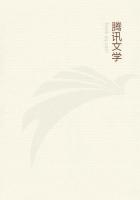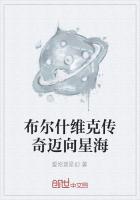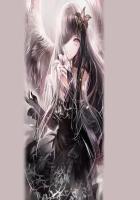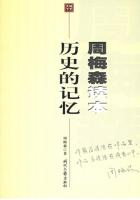For seeds also contain the first principle of growth in themselves, and when this (which previously exists in them only potentially) has been differentiated, the shoot and the root are sent off from it, and it is by the root that the plant gets nourishment; for it needs growth.So also in the embryo all the parts exist potentially in a way at the same time, but the first principle is furthest on the road to realization.Therefore the heart is first differentiated in actuality.
This is clear not only to the senses (for it is so) but also on theoretical grounds.For whenever the young animal has been separated from both parents it must be able to manage itself, like a son who has set up house away from his father.Hence it must have a first principle from which comes the ordering of the body at a later stage also, for if it is to come in from outside at later period to dwell in it, not only may the question be asked at what time it is to do so, but also we may object that, when each of the parts is separating from the rest, it is necessary that this principle should exist first from which comes growth and movement to the other parts.
(Wherefore all who say, as did Democritus, that the external parts of animals are first differentiated and the internal later, are much mistaken; it is as if they were talking of animals of stone or wood.
For such as these have no principle of growth at all, but all animals have, and have it within themselves.) Therefore it is that the heart appears first distinctly marked off in all the sanguinea, for this is the first principle or origin of both homogeneous and heterogeneous parts, since from the moment that the animal or organism needs nourishment, from that moment does this deserve to be called its principle or origin.For the animal grows, and the nutriment, in its final stage, of an animal is the blood or its analogue, and of this the blood-vessels are the receptacle, wherefore the heart is the principle or origin of these also.(This is clear from the Enquiries and the anatomical drawings.)Since the embryo is already potentially an animal but an imperfect one, it must obtain its nourishment from elsewhere; accordingly it makes use of the uterus and the mother, as a plant does of the earth, to get nourishment, until it is perfected to the point of being now an animal potentially locomotive.So Nature has first designed the two blood-vessels from the heart, and from these smaller vessels branch off to the uterus.These are what is called the umbilicus, for this is a blood-vessel, consisting of one or more vessels in different animals.Round these is a skin-like integument, because the weakness of the vessels needs protection and shelter.The vessels join on to the uterus like the roots of plants, and through them the embryo receives its nourishment.This is why the animal remains in the uterus, not, as Democritus says, that the parts of the embryo may be moulded in conformity with those of the mother.This is plain in the ovipara, for they have their parts differentiated in the egg after separation from the matrix.
Here a difficulty may be raised.If the blood is the nourishment, and if the heart, which first comes into being, already contains blood, and the nourishment comes from outside, whence did the first nourishment enter? Perhaps it is not true that all of it comes from outside just as in the seeds of plants there is something of this nature, the substance which at first appears milky, so also in the material of the animal embryo the superfluous matter of which it is formed is its nourishment from the first.
The embryo, then, grows by means of the umbilicus in the same way as a plant by its roots, or as animals themselves when separated from the nutriment within the mother, of which we must speak later at the time appropriate for discussing them.But the parts are not differentiated, as some suppose, because like is naturally carried to like.Besides many other difficulties involved in this theory, it results from it that the homogeneous parts ought to come into being each one separate from the rest, as bones and sinews by themselves, and flesh by itself, if one should accept this cause.The real cause why each of them comes into being is that the secretion of the female is potentially such as the animal is naturally, and all the parts are potentially present in it, but none actually.It is also because when the active and the passive come in contact with each other in that way in which the one is active and the other passive (Imean in the right manner, in the right place, and at the right time), straightway the one acts and the other is acted upon.The female, then, provides matter, the male the principle of motion.And as the products of art are made by means of the tools of the artist, or to put it more truly by means of their movement, and this is the activity of the art, and the art is the form of what is made in something else, so is it with the power of the nutritive soul.As later on in the case of mature animals and plants this soul causes growth from the nutriment, using heat and cold as its tools (for in these is the movement of the soul), and each thing comes into being in accordance with a certain formula, so also from the beginning does it form the product of nature.For the material by which this latter grows is the same as that from which it is constituted at first;consequently also the power which acts upon it is identical with that which originally generated it; if then this acting power is the nutritive soul, this is also the generative soul, and this is the nature of every organism, existing in all animals and plants.[But the other parts of the soul exist in some animals, not in others.] In plants, then, the female is not separated from the male, but in those animals in which it is separated the male needs the female besides.















